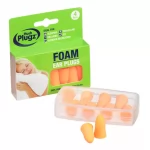Ear wax, also known as cerumen, is a naturally occurring substance that protects and lubricates the ear canal. It is produced by the sebaceous glands in the ear and is made up of a mixture of oils, sweat, and dead skin cells. While ear wax is necessary for good ear health, it can sometimes build up and cause problems. When ear wax accumulates, it can lead to a blocked ear canal, which can cause hearing problems, discomfort, and even infections. In these cases, ear wax removal may be necessary.
There are several methods for removing ear wax, including at-home remedies and professional treatments. Here is a review of some common ear wax removal methods:
- Ear wax softeners: These products, which are available over the counter, contain substances such as hydrogen peroxide or glycerin that help to soften and loosen ear wax. To use an ear wax softener, you will need to follow the instructions on the product label. In general, you will need to place a few drops of the solution in your ear and then lie with the affected ear facing upwards for a few minutes. This will allow the solution to penetrate the ear wax and soften it. You may need to repeat this process a few times before the ear wax is ready to be removed.
- Manual removal: If ear wax is visible in the ear canal, you may be able to remove it using a cotton swab or other small, pointed object. However, this method is generally not recommended because it can push the ear wax further into the ear canal, making the problem worse. In addition, attempting to remove ear wax with a cotton swab can damage the delicate skin of the ear canal and potentially cause an infection.
- Ear irrigation: Ear irrigation is a method of ear wax removal that involves flushing the ear canal with a stream of water. This can be done at home using a bulb syringe or at a medical clinic using a special ear irrigation device. To use an ear irrigation kit at home, you will need to fill the syringe with warm water and then gently squeeze the water into your ear while tilting your head to the side. This will help to flush out the ear wax. Again, be careful not to push the ear wax further into the ear canal.
- Professional removal: If you are unable to remove the ear wax on your own or if the ear wax is causing significant problems, you may need to seek professional help. An audiologist or a medical doctor can remove ear wax using specialized tools and techniques. One common method is to use a small, spoon-shaped instrument called a curette to gently scoop out the ear wax. Another method is to use suction to remove the ear wax. This can be done using a special ear wax removal machine or by using a handheld suction device.
It is important to note that ear wax removal should only be performed when necessary. In most cases, the ear’s natural cleaning process will take care of excess ear wax. If you are experiencing problems with ear wax accumulation, it is best to see a healthcare professional for proper diagnosis and treatment. Do not attempt to remove ear wax if you have a perforated eardrum or any other ear condition that may be made worse by ear wax removal.
In conclusion, ear wax is an important substance that protects and lubricates the ear canal. However, excess ear wax can cause problems and may need to be removed. There are several methods for removing ear wax, including ear wax softeners, manual removal, ear irrigation, and professional removal. It is important to choose the appropriate method for your situation and to seek professional help if necessary. Remember, ear wax removal should only be performed when necessary and should not be attempted if you have a perforated eardrum or any other ear condition that may be made worse by ear wax removal.
